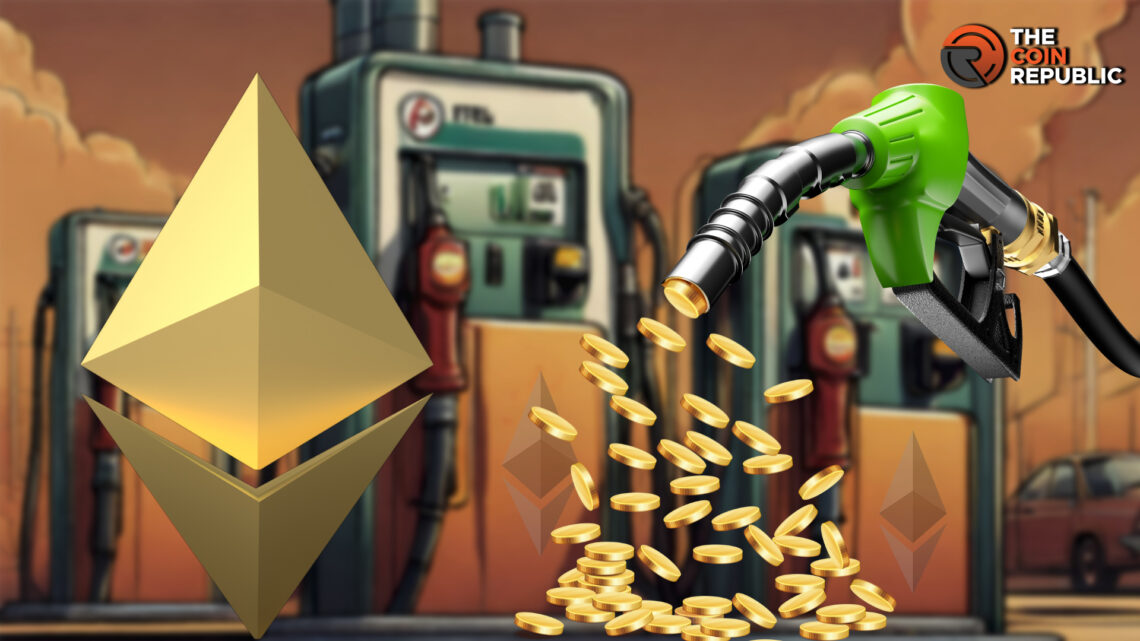- 1 Ethereum gas fees will remain high in 2024, causing adoption hurdles for users and apps.
- 2 Solutions span prudent transaction timing, accurate estimating, Layer 2s, code optimization, and gas marketplaces.
Ethereum’s elevated gas fees have persisted as a pain point for users and decentralized applications in 2024 despite ongoing efforts to enhance network scalability and efficiency.
However, understanding the underlying fee dynamics and proactively employing mitigation strategies can reduce transaction costs for a smoother on-chain experience.
This article explores Ethereum’s gas fee landscape, explaining the associated concepts in simple terms.
We also provide actionable tips to navigate volatile gas charges through optimized smart contract programming, strategic transaction timing, and leveraging Layer 2 solutions.
Finding the Gas Fee Structure
On Ethereum, gas fees represent payments made by users to compensate for the computational resources required to process and validate transactions or execute smart contracts. The fee is denominated in “gas,” which measures the computational effort for an operation.
The total gas fee amount depends on two variables:
- Gas Price: This is the amount a user is willing to pay for each unit of gas, denominated in Gwei (1 Gwei = 0.000000001 ETH).
- Gas Limit: The maximum quantity of gas the user allows for their transaction.
Thus, the total Gas Fee = Gas Price x Gas Limit
Factors Influencing Gas Price Volatility
Gas prices tend to fluctuate unpredictably based on:
- Network congestion and transaction volumes
- Demand spikes during popular token sales or mint events
- Complexity of smart contract operations
Due to limited block space and auction-based pricing, gas fees can surge exponentially in peak periods, like high trading activity or hot NFT mints. This frustrates users with exorbitant and unpredictable transaction fees.
Strategies to Save on Gas in 2024
Here are tips to optimize gas costs in 2024:
Schedule Transactions Strategically
Monitoring historical gas price charts on Etherscan and ETH Gas Station to identify lower fee periods based on weekly and daily patterns.
Use Fee Estimation Tools
Platforms like Etherscan and MetaMask provide gas cost approximation before sending transactions. This allows for the appropriate setting of gas prices and limits.
Shift to Layer 2 Networks
Layer 2 solutions allow faster and cheaper transactions by processing them off-chain and submitting a summary or evidence to the Ethereum mainnet. Layer 2 solutions can drastically reduce network gas expenses and congestion while ensuring security and compliance with Ethereum. Some popular Layer 2 solutions are Optimistic Rollups, zkRollups, Polygon, and Arbitrum.
Refine Smart Contract Code
Optimizing contract logic by removing loops, minimizing external calls, and fixing inefficiencies reduces computing requirements and gas costs.
Leverage Gas Marketplaces
Platforms like Gas Swap, Gas Station Network, and Gasless allow bidding for gas based on urgency. Users get fee savings or rewards for flexible timing.
Exploring the Future Gas Trajectory
Despite recent improvements in network throughput via upgrades like Shanghai, gas volatility continues to hamper Ethereum’s uptake. However, the long-anticipated transition to Proof-of-Stake consensus aims to deliver exponential scalability, stability, and predictability improvements.
Additionally, data availability solutions like Chainlink off-chain computation and The Graph for dApp data intend to reduce contract complexity and gas costs.
As Ethereum evolves technologically while maintaining cutting-edge security, solutions will continue emerging to streamline costs and bolster adoption. By staying updated on developments and best practices, users can overcome gas fee challenges for now and participate in Ethereum’s future capabilities.
Conclusion
Despite frustrations around stubbornly high gas fees, users can employ strategies like Layer 2 migration, strategic timing, estimation tools, and code optimization to reduce Ethereum transaction costs.
As newer solutions roll out and Ethereum’s growth persists, gas volatility will gradually subside, delivering affordability alongside unparalleled security and self-custody for users across DeFi, NFTs, and Web3 applications.

Steefan George is a crypto and blockchain enthusiast, with a remarkable grasp on market and technology. Having a graduate degree in computer science and an MBA in BFSI, he is an excellent technology writer at The Coin Republic. He is passionate about getting a billion of the human population onto Web3. His principle is to write like “explaining to a 6-year old”, so that a layman can learn the potential of, and get benefitted from this revolutionary technology.


 Home
Home News
News










